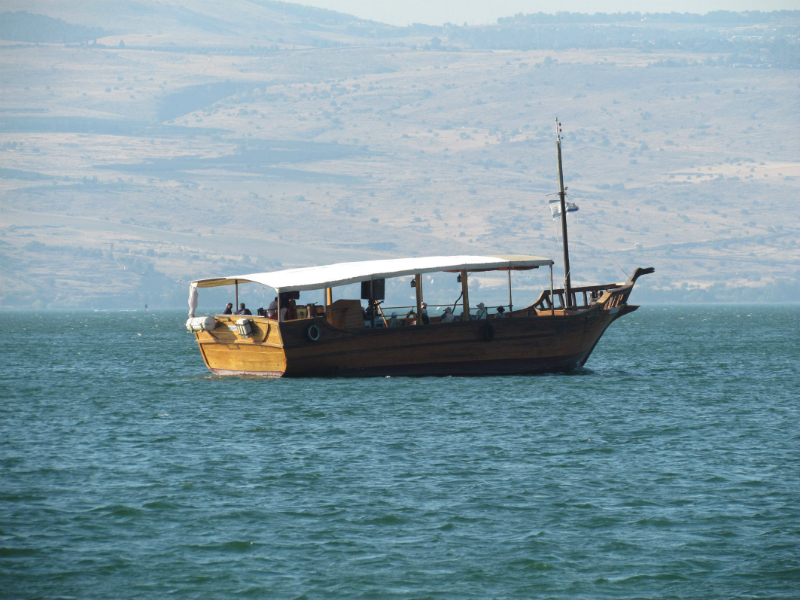The start of the Jewish year marks the beginning of the rainy season in Israel. Rosh Hashanah comes on different dates on the secular calendar, but it closely coincides with the autumn equinox, when the northern hemisphere transitions into winter. The atmospheric circulation strengthens and shifts toward the equator, bringing occasional storm systems carrying rain to the eastern Mediterranean. The importance of this seasonal change has been recognized in our liturgical cycle since the time of the Temple.
But even before Rosh Hashanah this year, Israelis were being warned that their water situation was dire. Drought has never been a stranger to the region – recall, for instance, the Genesis stories of the patriarchs moving to lands away from the droughts they were experiencing – but in modern times, one, two or even three years of drought always seemed to be followed by an exceptionally wet winter, to the palpable relief of the populace. On my first study visit to Israel in 1970, a prominent climatologist told me that drought was cyclical and never lasted longer than three years (but statistical analyses do not confirm such regularity).
Now, however, things seem to be different.
Last year – the Jewish year, 5778 – was ushered in with headlines such as, “Thirsty Sea of Galilee sinking towards lowest level ever recorded,” and “Bracing for drought, Israel asks desalination plants to crank up production to the max.” It was the fifth consecutive year of drought. Israeli Agriculture Minister Uri Ariel urged a mass gathering at the Western Wall with the chief rabbis, to offer prayers to break the drought. Thousands responded, and although they had been advised to bring umbrellas, they had no need for them on that day.
Other government ministers performed linguistic gymnastics to avoid saying the “D” word. Yuval Steinitz – the minister of national infrastructures, energy and water resources – said that the large amount of rain in January “enables us to avoid declaring a drought year, at least for the time being.” But that didn’t last for long.
Many officials have put their trust in Israel’s vaunted desalination capacity. Five large desalination plants built this century along the coast produce a volume of water equivalent to half the country’s annual domestic and agricultural use. Last spring, Steinitz announced plans for two more plants, and while he didn’t disclose the cost, they’ll probably be close to $1 billion.
Yet the infrastructure to move water inland and uphill is incomplete. The north of the country, which is also the wettest part, has been particularly hard hit by the current drought. Conditions are the driest in a century. The level of the Kinneret, Israel’s largest source of fresh water, is so low that water has not been pumped from it for four years. The cumulative water deficit exceeds the total annual water use in all sectors.
READ: ISRAEL MAKING FRIENDS BEHIND CLOSED DOORS AT THE UN: AMBASSADOR
Israel has long been known for innovative and effective approaches to using water efficiently. Reclaimed and recycled wastewater now supplies about 86 per cent of agricultural demand. Israel continues to support water-intensive agriculture, despite the small proportion of the national economy that it represents. Farmers in the north face a difficult choice of economics or water, such as having to choose high value but thirsty avocados or wheat, as they revert to growing just one crop per year.
Residential use continues to grow as population and living standards continue to rise. Residential water use increased 10 per cent between 2016 and 2018, reversing the results of a successful campaign of public service announcements (and sharp increases in domestic water prices) that were discontinued in 2013, when the last drought ended. Desalination provides about 70 per cent of the domestic water supply.
People, especially in the dense coastal and central areas, have become insulated from the natural conditions and are therefore unaware of the water stress. They are trusting that desalination has solved the problem. But in May, at the end of the last rainy season, the Water Authority launched a new campaign for conservation, urging people, among other things, to take shorter showers.
Some experts think that large-scale desalination insulates Israel’s water system from climatic conditions, but the current drought raises some doubts, or at least illustrates that desalination alone is insufficient at present. The costs of new infrastructure and ongoing operation and maintenance are enormous. Water saved by efficiency is cheaper than new water produced by technology. Desalination requires huge amounts of energy. The off-shore gas fields now being exploited may foster optimism that Israel will have the necessary resources to produce the water it wants and to move it against gravity (making, quite literally, water flow uphill), but there are many ancillary concerns about energy production and use. The ecological consequences of land converted from natural or agricultural to industrial uses are uncertain, as is the impact of returning saline sludge into the sea. There is also some evidence of health risks from consuming desalinated, rather than fresh, water.
Less than three weeks before this new year, 5779, the Water Authority announced that Israel is entering its sixth consecutive year of drought. Does the response have to be a choice between prayer or technology?
